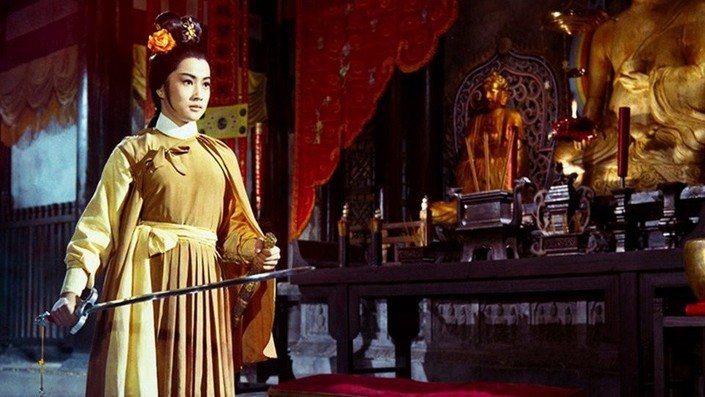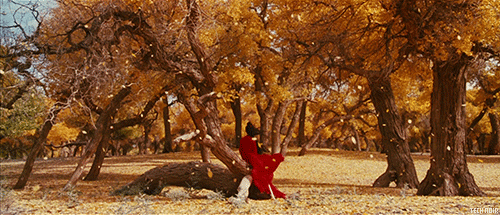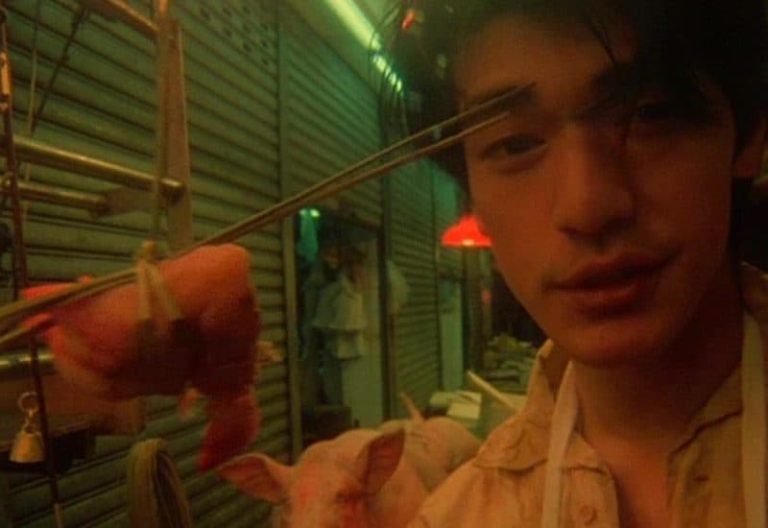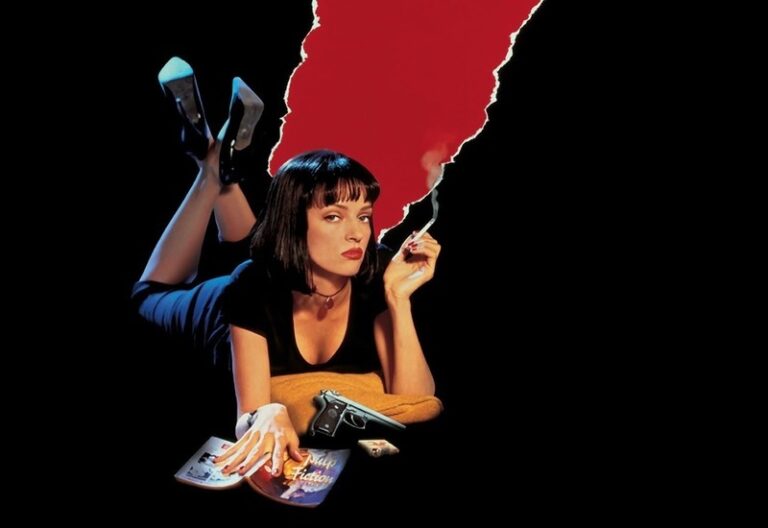beginner's guide to wuxia films
Wuxia, a term blending wu (武), meaning martial, and xia (侠), chivalrous hero, is a popular genre of Chinese literature and film. Though rooted in classical Chinese literature and philosophy, wuxia has become a cornerstone of Chinese cinema. Over the past century, it has evolved from low-budget silent films to internationally acclaimed visual epics.
Published by: CinemaWaves Team | Filed Under: Film Blog
Brief History:
From Page to Screen
Wuxia’s literary tradition began in ancient Chinese folklore and evolved during the Tang and Song dynasties (7th–13th centuries), gaining popularity through novels during the Ming and Qing eras. Writers like Jin Yong and Gu Long revolutionized modern wuxia fiction in the 20th century, blending historical settings, martial arts fantasy, and philosophical depth, and influencing the films to come.
The first wuxia films appeared in Shanghai in the 1920s and 1930s. These silent-era productions used primitive effects to depict gravity-defying feats and combat. However, this early boom faced backlash: the Kuomintang government deemed such films morally dangerous and banned them in the mid-1930s. As a result, many filmmakers moved operations to Hong Kong (and Taiwan), which would later emerge as the creative and commercial hub for wuxia cinema.

The Golden Age:
King Hu and Shaw Brothers
The 1950s and 1960s marked a major resurgence of wuxia cinema, particularly in Hong Kong and Taiwan, where shifting cultural landscapes and a growing appetite for local stories sparked a creative boom. The Shaw Brothers Studio, one of the most prolific film companies in Asia, emerged as a powerhouse of wuxia filmmaking. Their productions were known for lavish costumes, vibrant color palettes, stylized sets, and larger-than-life storytelling.
Films such as “Temple of the Red Lotus” (1965) and “The One-Armed Swordsman” (1967) became box office hits, helping to standardize the visual and narrative language of the genre. These films were often melodramatic and action-driven, emphasizing loyalty and personal honor within beautifully choreographed battle sequences.
But it was King Hu, a director who began his career with Shaw Brothers before breaking away, who elevated wuxia into the realm of high art. Hu brought a unique blend of theatricality, elegance, and spiritual depth to the genre. His film “Come Drink with Me” (1966) introduced one of the earliest iconic female martial arts heroines, portrayed by Cheng Pei-pei, and incorporated sophisticated camera movements and editing techniques that transformed action choreography into visual poetry.
Hu’s magnum opus “A Touch of Zen” (1971), remains one of the most acclaimed wuxia films of all time. It seamlessly wove together martial arts, Zen Buddhist themes and philosophical introspection. Though initially underappreciated, it later gained recognition at the Cannes Film Festival and influenced directors such as Ang Lee, Tsui Hark, and Zhang Yimou.

Defining Characteristics
of Wuxia Films
The Xia Code: Central to wuxia is the concept of xia — a moral code where the hero fights for justice, often at great personal cost. These figures are loyal to their own values rather than to kings or governments.
Mythic Martial Arts: Combat in wuxia is balletic and physics-defying. Sword fights take place in mid-air, atop treetops, or across vast, poetic landscapes.
Historical Settings: Wuxia films take place in the distant past, drawing on imperial dynasties and folklore without strict historical accuracy.
Visual Poetry: Cinematography emphasizes natural beauty, bamboo forests, misty mountains, flowing robes, creating a painterly aesthetic that echoes classical Chinese art.
Philosophical Undertones: Many wuxia films explore themes like fate, identity, loyalty, and the illusion of power. The best of them blend entertainment with introspection.

The Global Revival: 1990s–2000s
By the 1990s, wuxia was undergoing a dynamic transformation. Directors like Tsui Hark reinvigorated the genre with a bold, kinetic style that blended tradition with innovation. His “Swordsman” trilogy and the “Once Upon a Time in China” series combined rapid-fire action, elaborate choreography, and nationalistic undertones. These films appealed to a new generation of viewers while maintaining the philosophical and moral core of wuxia storytelling.
The turning point for global recognition came with Ang Lee’s “Crouching Tiger, Hidden Dragon” (2000). It won four Academy Awards, including Best Foreign Language Film, and became the highest-grossing foreign-language film in U.S. history at the time. Its success opened the door for other ambitious wuxia films to reach a global stage.
Following its triumph, directors like Zhang Yimou released a string of visually sumptuous epics — “Hero” (2002), “House of Flying Daggers” (2004), and “Curse of the Golden Flower” (2006) — that brought wuxia to new cinematic heights. These films combined painterly cinematography, color symbolism, and large-scale drama, cementing wuxia’s place not just as genre entertainment, but as internationally acclaimed art cinema.

Recommended Wuxia
Films to Watch
“Come Drink with Me” (1966) by King Hu: This film introduced the strong female warrior archetype to wuxia cinema. Starring Cheng Pei-pei, it was groundbreaking in its choreography and genre-blending, mixing opera aesthetics with martial arts action.
“A Touch of Zen” (1971) by King Hu: A landmark of wuxia cinema, this film follows a painter who gets caught up in political intrigue and Buddhist mysticism. Known for its dreamlike cinematography and philosophical weight, A Touch of Zen was the first Chinese-language film to win a technical prize at Cannes.
“Once Upon a Time in China” (1991) by Tsui Hark: Starring Jet Li as the legendary folk hero Wong Fei-hung, it reinvigorated the wuxia genre in the 1990s. Combining nationalistic themes with dazzling martial arts choreography, it highlights the clash between tradition and Western colonialism. Its success launched a beloved franchise and helped bring wuxia to a new generation.
“Ashes of Time” (1994) by Wong Kar-wai: A poetic, nonlinear take on wuxia by the famed auteur, this film turns the genre inward, focusing on memory, regret, and lost love. Moody and abstract, Ashes of Time offers a radically different — and hauntingly beautiful — vision of the wuxia world.
“Crouching Tiger, Hidden Dragon” (2000) by Ang Lee: This international phenomenon blends romantic longing, stunning martial arts, and existential themes. With breathtaking wire-fu choreography and a haunting score, the film brought wuxia to the world stage and demonstrated its emotional as well as visual power.
“Hero” (2002) by Zhang Yimou: Starring Jet Li, Hero is a visual and narrative marvel, recounting multiple versions of an assassination attempt on the First Emperor of China. The film uses color symbolism and Rashomon-style storytelling to explore truth, loyalty, and nationalism.
Refer to the main page for more educational insights on filmmaking and cinema history.
Emerging in the late 20th century, a film movement known as the Hong Kong New Wave, originating from the bustling neon streets of Hong Kong, while captivating global…
Special effects in film have always been a kind of magic – tricking our eyes into seeing the impossible, making the unreal seem real. It’s a craft that’s been around almost…
The studio system was a dominant force in Hollywood from the 1920s to the 1950s. It was characterized by a few major studios controlling all aspects of film production…
Cinematography is the art and craft of capturing visual images for film or digital media. It involves the use of cameras, lighting, composition, and movement to tell…
Postmodernist film emerged in the latter half of the 20th century, rooted in the broader cultural and philosophical movement of postmodernism. It started as a reaction to the…
Arthouse film refers to a category of cinema known for its artistic and experimental nature, usually produced outside the major film studio system. These films prioritize artistic…






